“Swan Lake”
Ballet Zurich
Opernhaus Zurich
Zurich, Switzerland
February 06, 2016
by Ilona Landgraf
Copyright © 2016 by Ilona Landgraf
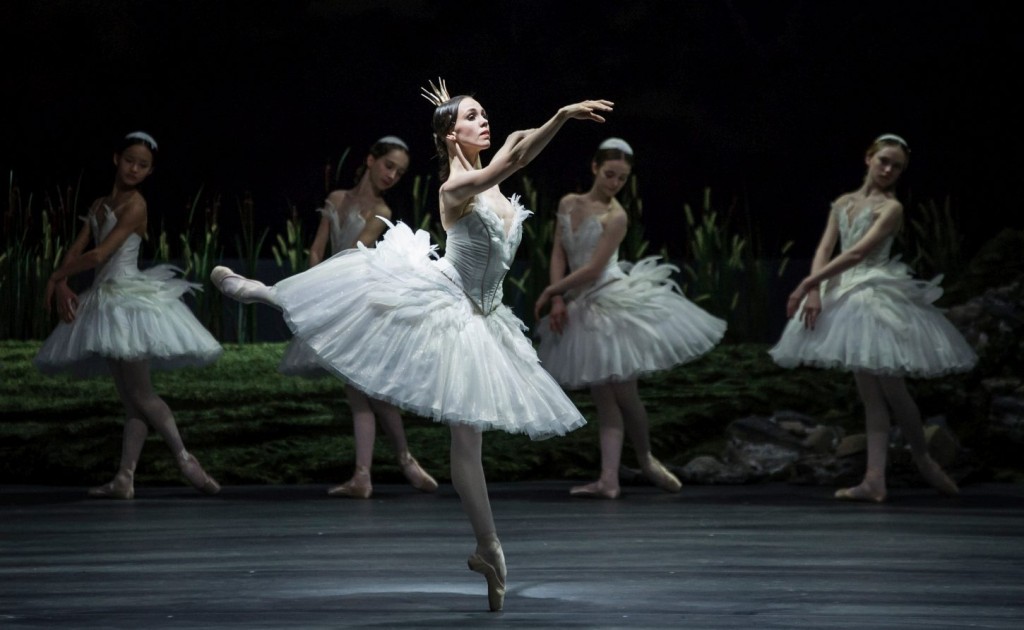 Germany’s ballet world can count itself lucky. Alexei Ratmansky works regularly within reachable distance. We had the chance to see his own choreography – “Namouna” in Berlin and “Tanzsuite” at the Semperoper Dresden – and his reconstructions of Marius Petipa’s masterpieces: “Paquita” at the Bavarian State Ballet, followed by “The Sleeping Beauty” at La Scala, Milan. Now the best known ballet of all, “Swan Lake”, has just premiered with Zurich Ballet. It is a coproduction with La Scala where it will be on the schedule from late June onwards.
Germany’s ballet world can count itself lucky. Alexei Ratmansky works regularly within reachable distance. We had the chance to see his own choreography – “Namouna” in Berlin and “Tanzsuite” at the Semperoper Dresden – and his reconstructions of Marius Petipa’s masterpieces: “Paquita” at the Bavarian State Ballet, followed by “The Sleeping Beauty” at La Scala, Milan. Now the best known ballet of all, “Swan Lake”, has just premiered with Zurich Ballet. It is a coproduction with La Scala where it will be on the schedule from late June onwards.
By chance, one can see swans and seagulls floating on Lake Zurich from the opera house’s balcony. Could there be a better Place for the famous swan story?
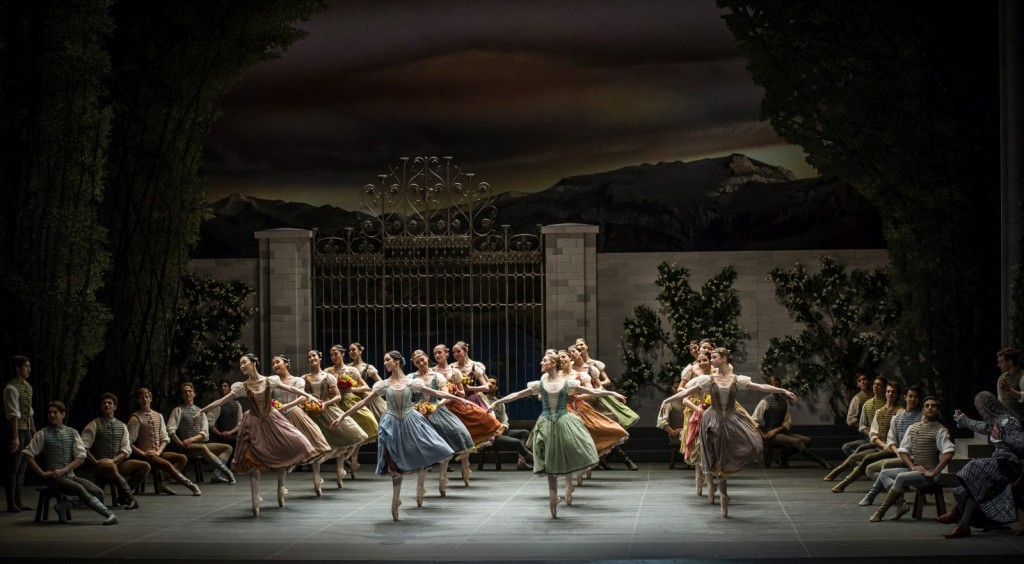 In an interview with the Neue Züricher Zeitung shortly before the opening night, Ratmansky noted that the project would be very, very difficult and that he had no clue as to what would be the outcome. But there was no reason for any concern. The Marius Petipa and Lev Ivanov’s 1895 St. Petersburg version that Ratmansky unearthed from the Stepanov notations is gorgeous.
In an interview with the Neue Züricher Zeitung shortly before the opening night, Ratmansky noted that the project would be very, very difficult and that he had no clue as to what would be the outcome. But there was no reason for any concern. The Marius Petipa and Lev Ivanov’s 1895 St. Petersburg version that Ratmansky unearthed from the Stepanov notations is gorgeous.
From now on, other traditional versions of “Swan Lake” will have to benchmark themselves against this, which is as close to the original as possible. Of course neither they nor Ratmansky’s work can be one-hundred percent identical copies of the original. Travel through time isn’t possible. Moreover Ratmansky didn’t intend to present an anachronistic museum piece. Dancers’ physiques and technique have changed; the notations are sometimes fragmentary and also people’s tastes are different.
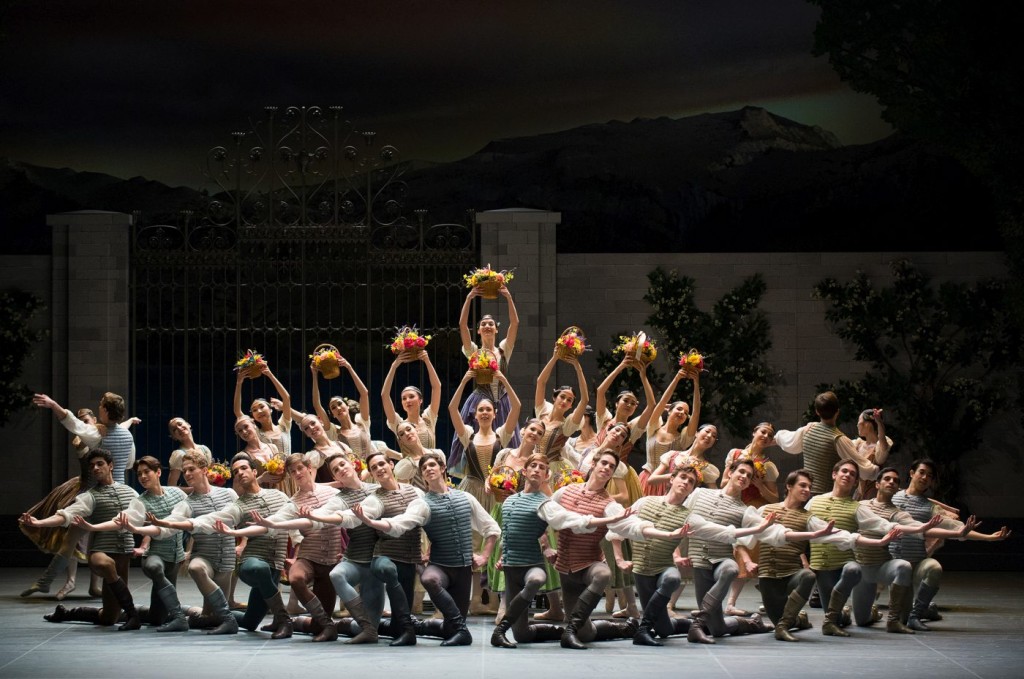 To fill choreographic gaps Ratmansky returned to old photos, sketches, videos, guided by his enormous knowledge about ballet’s history, which, above all, he used in a sensitive manner to interpret Petipa’s intention. Ratmansky has the personal artistic greatness to sideline his own ego, instead committing himself entirely to the work of the preceding master. He took his curtain calls modestly, with a serious face, his eyes looking down. Clearly reconstructing “Swan Lake” was near and dear to him. Now as it was done he seemed moved by what he had achieved.
To fill choreographic gaps Ratmansky returned to old photos, sketches, videos, guided by his enormous knowledge about ballet’s history, which, above all, he used in a sensitive manner to interpret Petipa’s intention. Ratmansky has the personal artistic greatness to sideline his own ego, instead committing himself entirely to the work of the preceding master. He took his curtain calls modestly, with a serious face, his eyes looking down. Clearly reconstructing “Swan Lake” was near and dear to him. Now as it was done he seemed moved by what he had achieved.
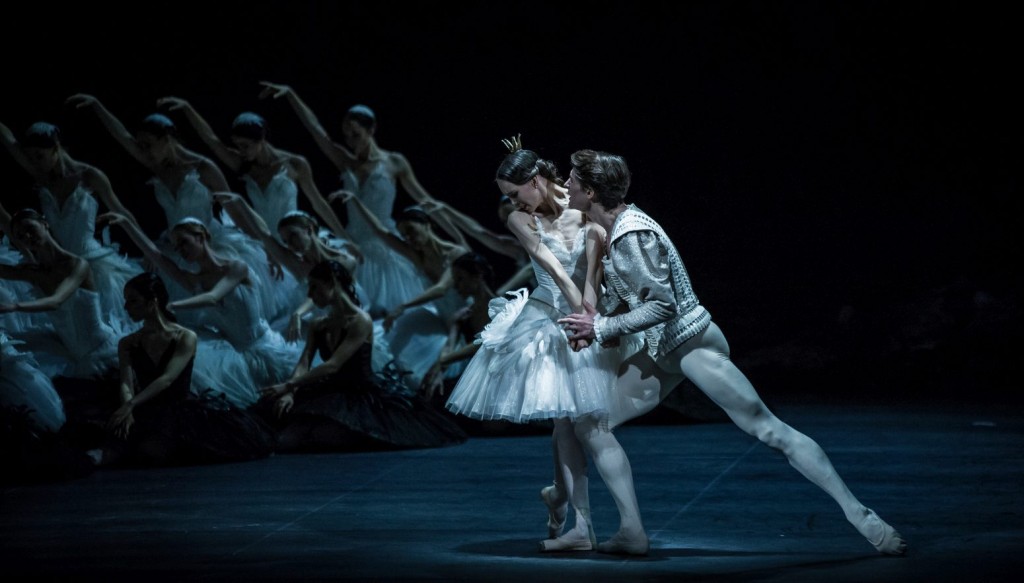 As with “Paquita” and other productions of Ratmansky, Jérôme Kaplan was in charge of the set design and the costumes, replacing the initially commissioned Toer van Schayk. Many designs are inspired by the décor of 1895, recalling a medieval era, but a one-to-one reconstruction wasn’t intended.
As with “Paquita” and other productions of Ratmansky, Jérôme Kaplan was in charge of the set design and the costumes, replacing the initially commissioned Toer van Schayk. Many designs are inspired by the décor of 1895, recalling a medieval era, but a one-to-one reconstruction wasn’t intended.
In the park where Prince Siegfried’s majority is celebrated, the lake is already visible behind a wrought-iron gate. Cypresses line the left side of the stage at the lakeside. On the half-right backside a few stone treads lead to a stone archway which opens towards the lake. Some magic surrounds this archway, as the line of swans, swimming from the left towards the right side of the stage at the beginning of the lakeside scene, mysteriously disappear behind the doorjamb. They don’t pass the doorway. The archway is controlled by Rothbart. Later Odette and Siegfried will fall to their death through this exact same archway.
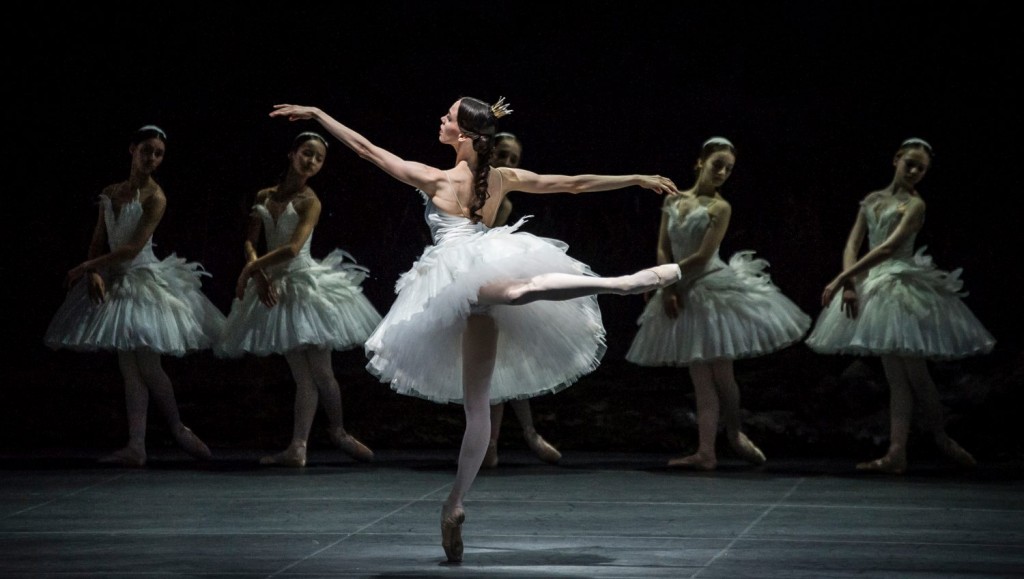 The ball room at the castle, visually extending towards the back, has plain gray pillars on the left side, a throne on the right, wall chandeliers and some walls hung with carpets in geometrical patterns rather than medieval tapestries. The costumes are lavish and created with love for detail but they are never overdecorated. That is most apparent at the court. At the ball, the Queen’s robe is plain black, complemented by a large golden necklace. Her female attendants are in simple, medieval garments. The swan maidens have white, round caps and knee-length tutus decorated with feathers. Their hair,
The ball room at the castle, visually extending towards the back, has plain gray pillars on the left side, a throne on the right, wall chandeliers and some walls hung with carpets in geometrical patterns rather than medieval tapestries. The costumes are lavish and created with love for detail but they are never overdecorated. That is most apparent at the court. At the ball, the Queen’s robe is plain black, complemented by a large golden necklace. Her female attendants are in simple, medieval garments. The swan maidens have white, round caps and knee-length tutus decorated with feathers. Their hair, 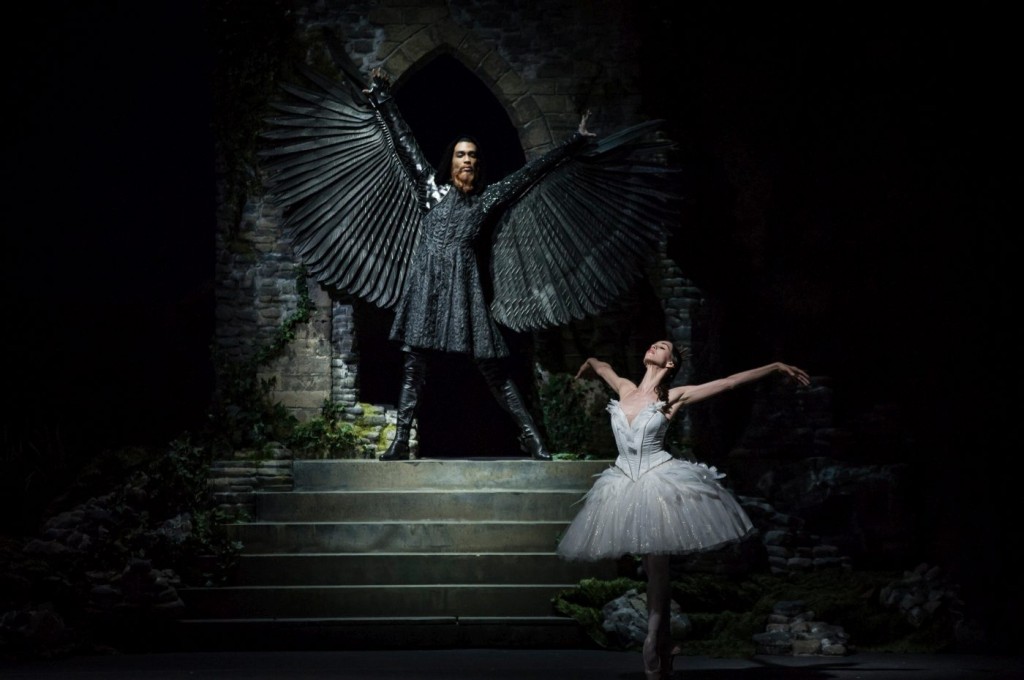 bound into ponytails, curls naturally. Odette wears a little crown which she complements with a thin headband as Odile. Then the pleats of her skirt shimmer in black, dark green, blue and velvet that is only faintly reminiscent of a bird’s plumage.
bound into ponytails, curls naturally. Odette wears a little crown which she complements with a thin headband as Odile. Then the pleats of her skirt shimmer in black, dark green, blue and velvet that is only faintly reminiscent of a bird’s plumage.
Siegfried and his friend Benno are in contemporary tights revealing the whole line of the leg. Is this a concession to today’s taste or a result of comments about using old-fashioned breeches in “Sleeping Beauty”? At the lakeside Rothbart wears a black bird’s costume with wide arm wings. When appearing at the court ball he is in a knight’s armor.
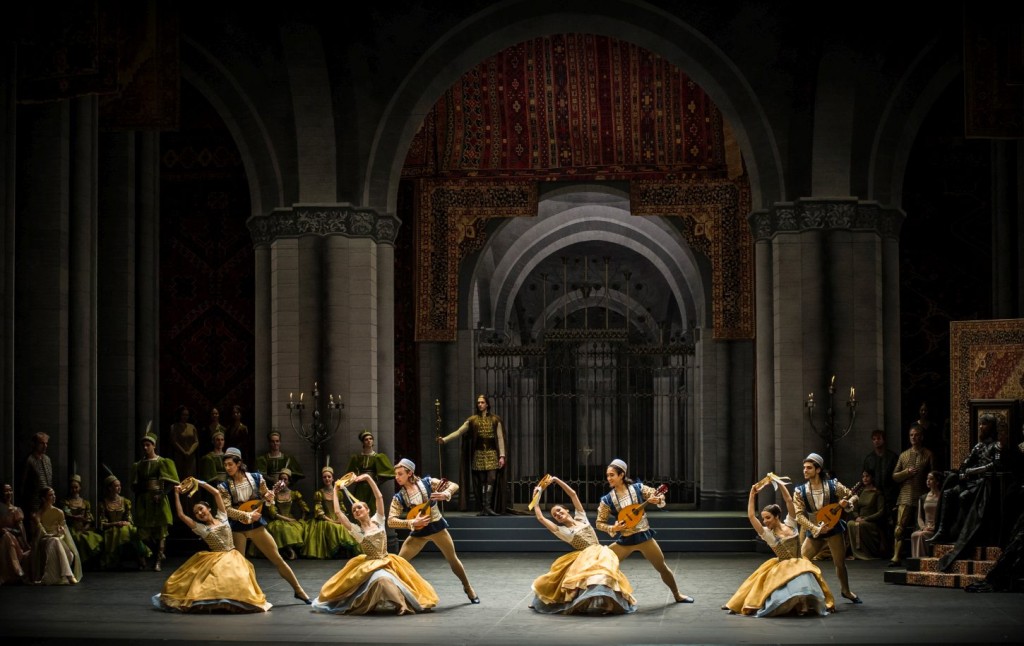 Kaplan doesn’t scrimp, neither with fabric – skirts swing widely and have an underskirt in a nicely contrasting color plus several white underskirts – nor with details. The tone of the women’s pearl necklaces in the third act’s Mazurka matches, for example, the tone of their underskirts. The two couples of the Spanish dance have thin laces with beads stringed around their ankles – mini pseudo-bells maybe? Delicate floral wreaths grace the hairdos of the peasant girls.
Kaplan doesn’t scrimp, neither with fabric – skirts swing widely and have an underskirt in a nicely contrasting color plus several white underskirts – nor with details. The tone of the women’s pearl necklaces in the third act’s Mazurka matches, for example, the tone of their underskirts. The two couples of the Spanish dance have thin laces with beads stringed around their ankles – mini pseudo-bells maybe? Delicate floral wreaths grace the hairdos of the peasant girls.
Props are used amply: The village girls carry flower baskets or have colored ribbons bound to their wrists. The six young women, in line each hoping to become the Prince’s bride, have round fans; the Neapolitan dancers handle banjos and 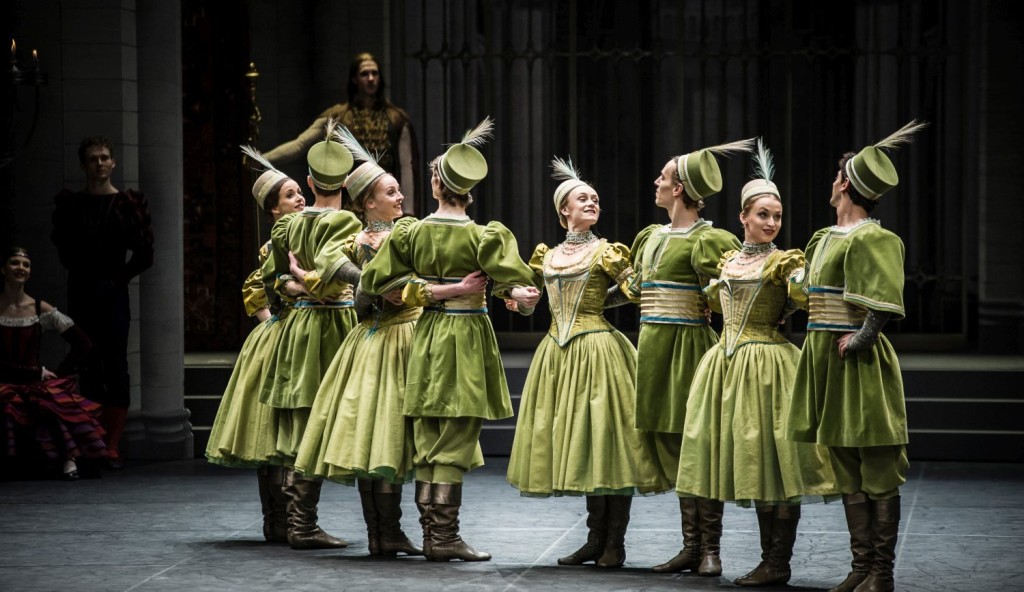 tambourines. Kaplan has taste and sense of style. Again he did an excellent job!
tambourines. Kaplan has taste and sense of style. Again he did an excellent job!
So, what surfaced after Ratmansky removed the layers of varnish which in the course of decades had been applied to the choreography and the libretto?
First the swans are now young, human women in swan tutus rather than animal creatures. The wing-like arm movements are replaced by natural expressions of emotions. The swans, fearful of the hunters, turn anxiously away or, later, try to comfort the betrayed Odette. Likewise, Odile is less of a Black Swan than a malicious daughter led by her wicked father 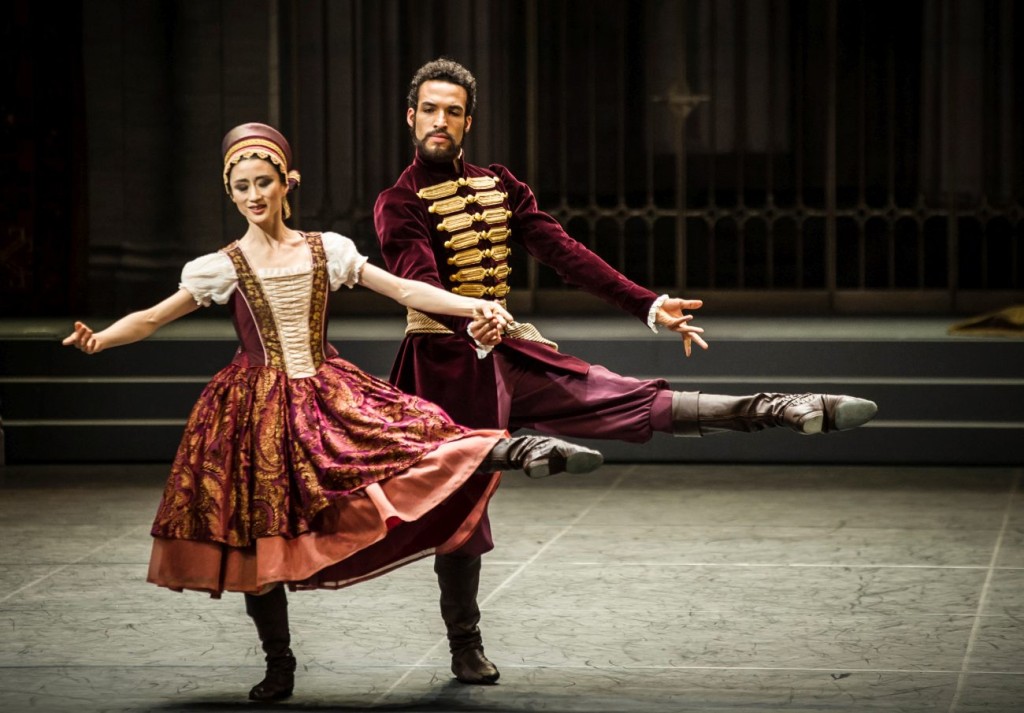 Rothbart. During her pas de deux with Siegfried at the ball, she distracts him from his visions of Odette by gently covering his eyes with her hands. In other productions Odette’s picture appears only after the Prince had made his disastrous vow choosing Odile instead.
Rothbart. During her pas de deux with Siegfried at the ball, she distracts him from his visions of Odette by gently covering his eyes with her hands. In other productions Odette’s picture appears only after the Prince had made his disastrous vow choosing Odile instead.
Benno, the Prince’s friend, not only dances in a pas de trois with two young ladies during the first act’s birthday party, but chivalrously supports him in partnering Odette. She confidently falls in Benno’s arms without even looking at him. “She accepts him simply as an extension of her prospective lover”, Alastair Macaulay wrote in his report in the New York Times.
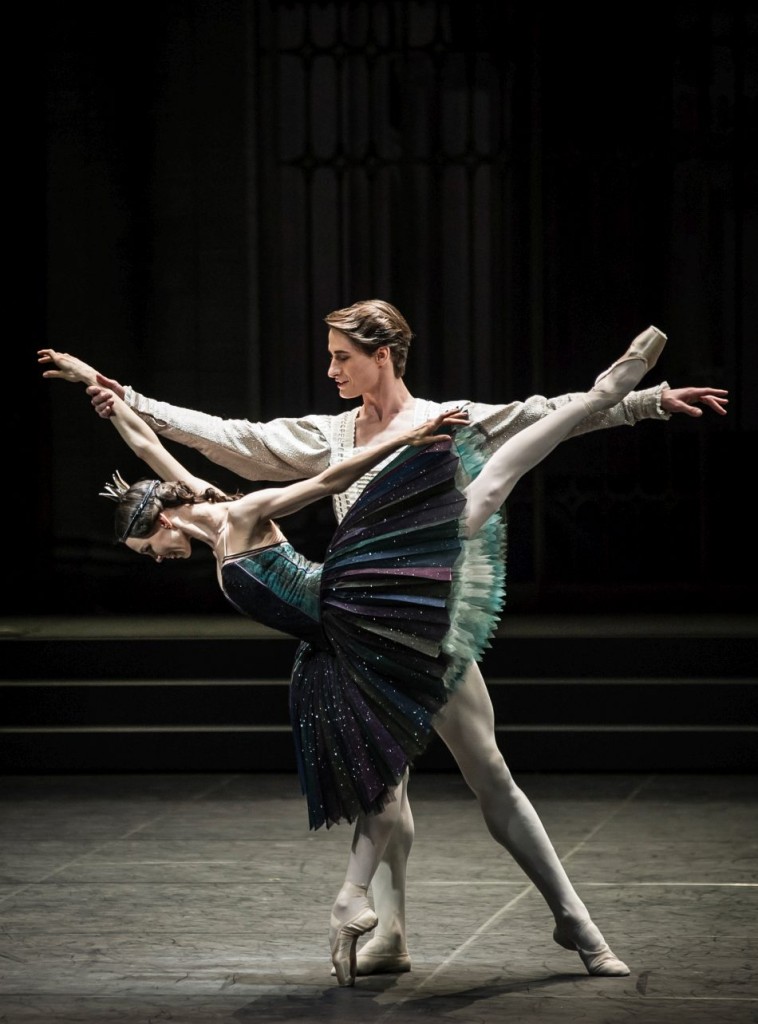
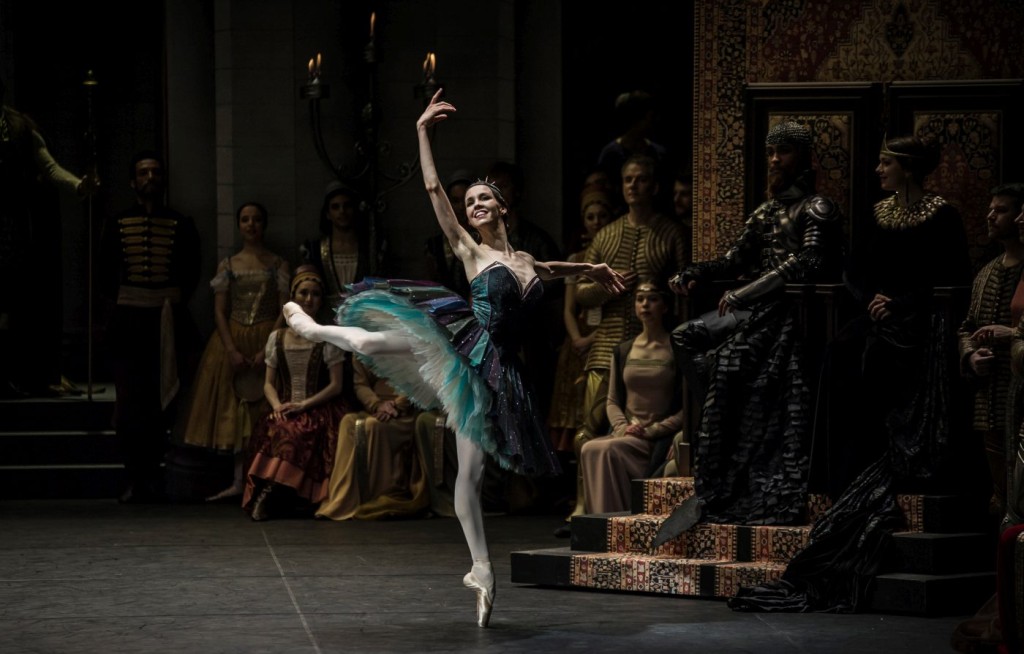 Deviating from the original notations, Ratmansky took the liberty to assign a few variations to the Prince and Benno which originally were danced by unspecified characters. But that there are in general more men – friends and hunters – involved in the first lakeside scene corresponds to the Ivanov original.
Deviating from the original notations, Ratmansky took the liberty to assign a few variations to the Prince and Benno which originally were danced by unspecified characters. But that there are in general more men – friends and hunters – involved in the first lakeside scene corresponds to the Ivanov original.
Overall, the choreography seems reinvigorated. Dances are at a brisk tempo requiring fleet footwork, but there are also slow, stretched sequences giving the eye time to rest and one time to savor. The folk dances, usually served up as showy 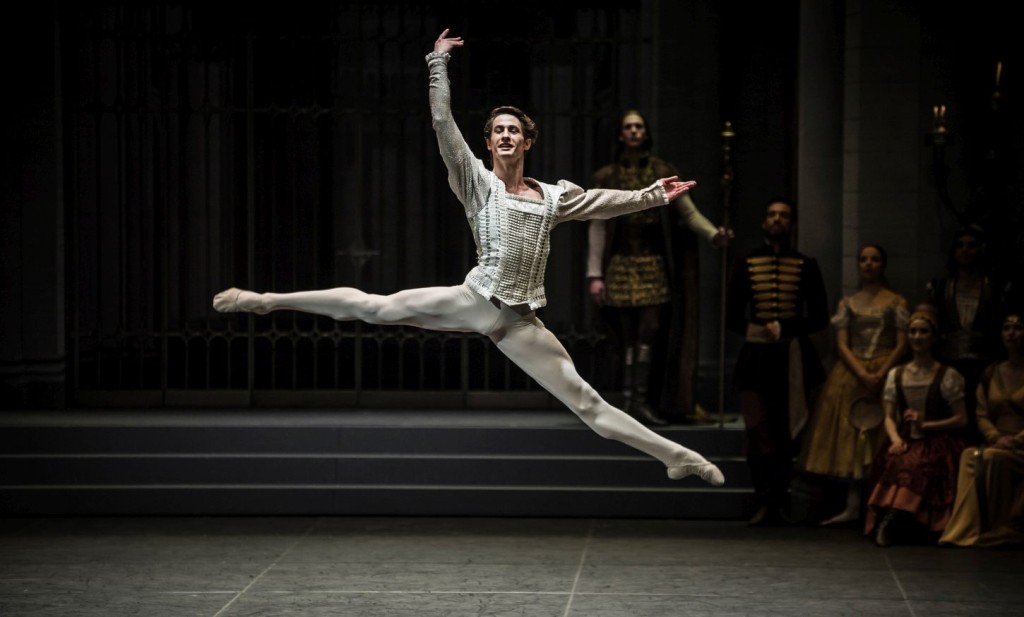
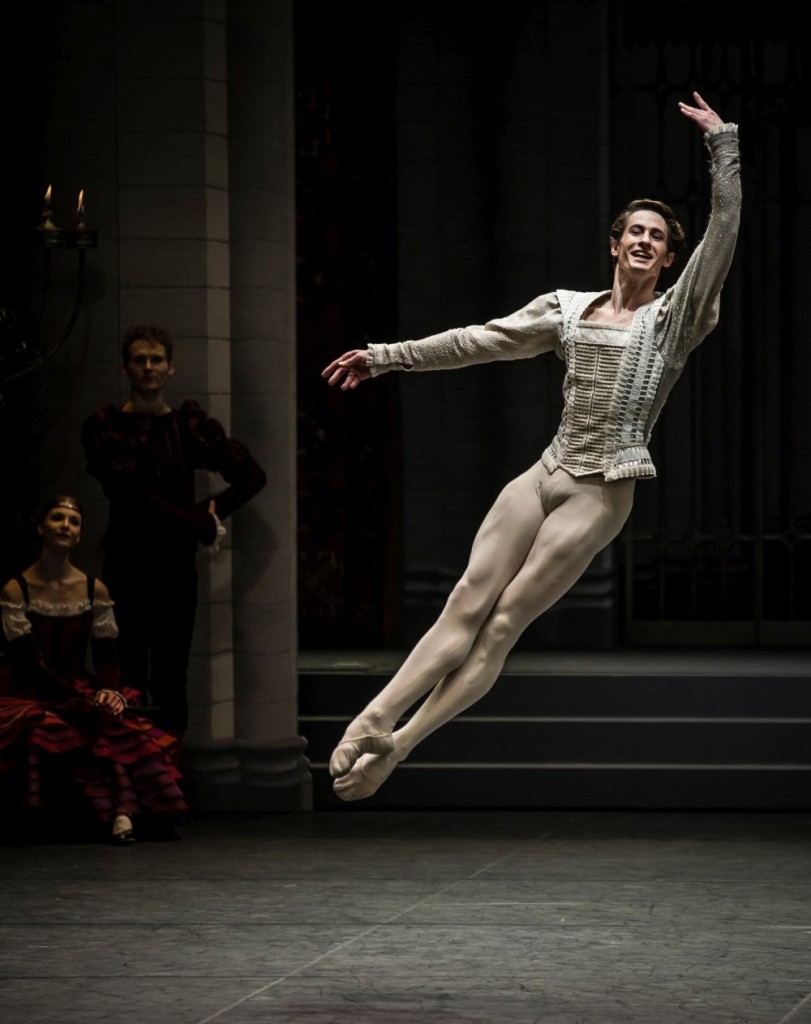 numbers, here are playful dance rituals. The Hungarian Dance and the Mazurka work out especially well. In both dances, the spirit has returned. The opening group waltz is charming, danced by twenty peasant couples in a celebratory mood. Its patterns change harmoniously. The cheerful May pole dance that follows is an eyecatcher. The pole’s brightly colorful ribbons add to the visual effect.
numbers, here are playful dance rituals. The Hungarian Dance and the Mazurka work out especially well. In both dances, the spirit has returned. The opening group waltz is charming, danced by twenty peasant couples in a celebratory mood. Its patterns change harmoniously. The cheerful May pole dance that follows is an eyecatcher. The pole’s brightly colorful ribbons add to the visual effect.
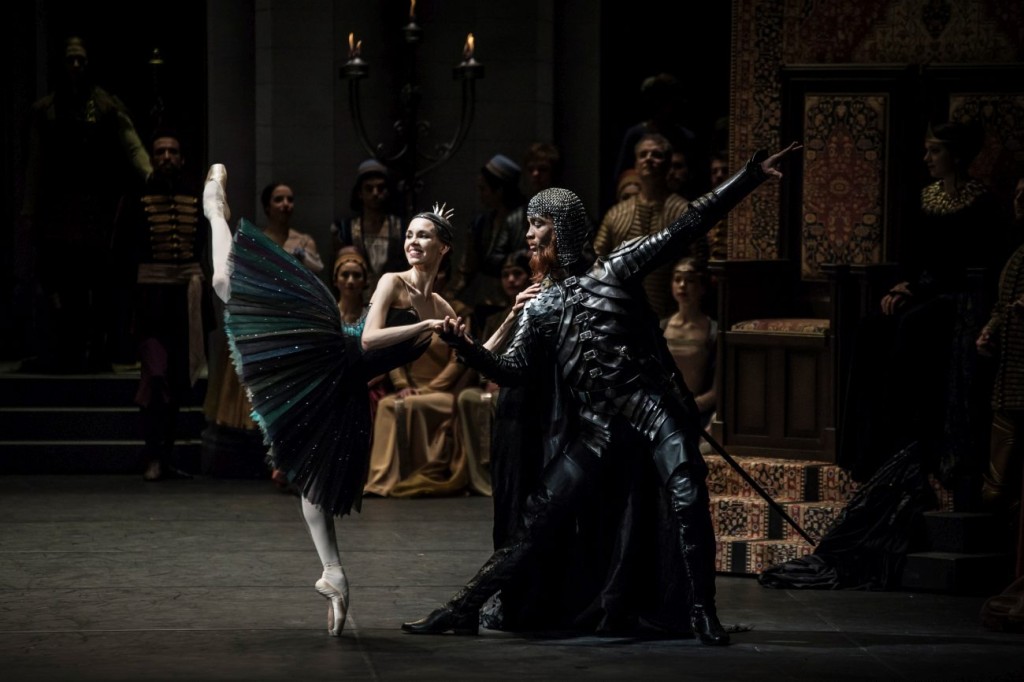 Odette and Siegfried’s lakeside pas de deux, slowed to snails pace in today’s Russian versions, are danced at a quicker pace, which seems much more appropriate. Almost the whole time the swan corps frames the two, accompanying them with soft trembles in their pointe shoes. Two positions have returned which had disappeared from other versions: by the lakeside in Act I, Odette at one point stands on the kneeling Benno’s thigh; and in the ballroom scene Odile and Siegfried’s pas de deux ends with her gripping the knee of the kneeling Prince while in Arabesque position – a
Odette and Siegfried’s lakeside pas de deux, slowed to snails pace in today’s Russian versions, are danced at a quicker pace, which seems much more appropriate. Almost the whole time the swan corps frames the two, accompanying them with soft trembles in their pointe shoes. Two positions have returned which had disappeared from other versions: by the lakeside in Act I, Odette at one point stands on the kneeling Benno’s thigh; and in the ballroom scene Odile and Siegfried’s pas de deux ends with her gripping the knee of the kneeling Prince while in Arabesque position – a 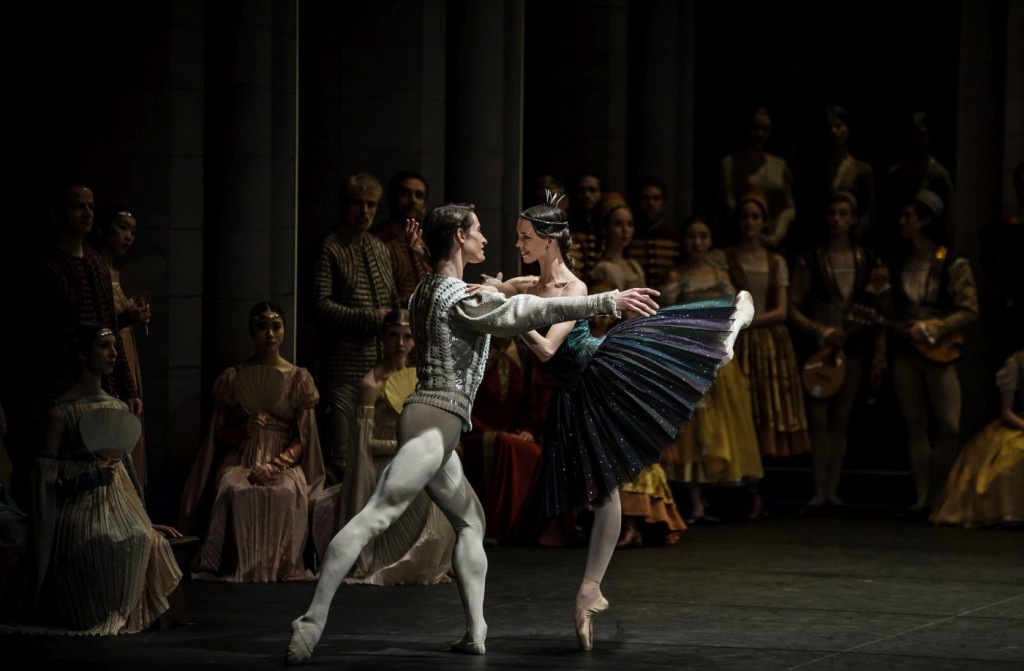 telling statement of who is dominant.
telling statement of who is dominant.
In relation to other productions the movements are more rounded and soft reflecting the virtuosity of the Italian dance style towards which Petipa inclined at the end of his career. The miming which is one of the main assets of this production is clear and unpretentious, generated from an inner need to express something. There is no extra-artificiality, no mannerism, no effort to appear majestic or brilliant. Odile’s fouettes are there as are a few jumping sequences for Siegfried and Benno, but 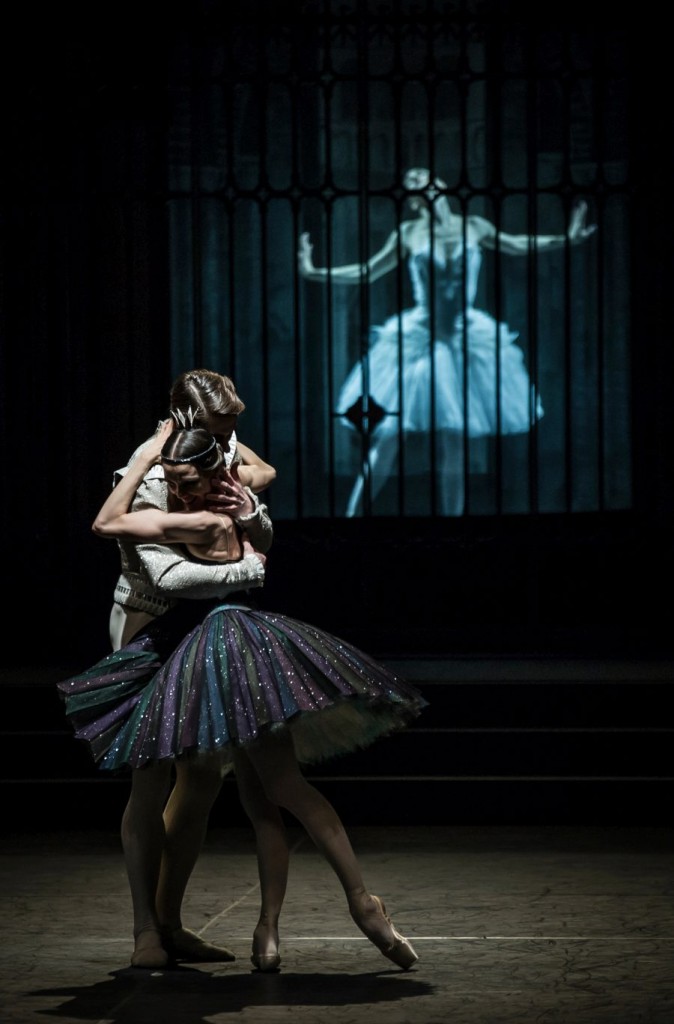 those scenes are integral parts of the whole, not singled out show-off sensations. The story and the characters’ integrity is kept. That is why the piece speaks to the audience. Compared to other versions since Petipa, this “Swan Lake” breathes more freely.
those scenes are integral parts of the whole, not singled out show-off sensations. The story and the characters’ integrity is kept. That is why the piece speaks to the audience. Compared to other versions since Petipa, this “Swan Lake” breathes more freely.
The opening night was led by Viktorina Kapitonova as Odette/Odile and Alexander Jones as Prince Siegfried. Kapitonova’s Odette, at first scared and resisting, gradually developed trust and confidence in the Prince. After having been betrayed, she wavered between giving way to feebleness or being strong and graceful. Several times her torso slumped sideways over Siegfried’s arm. As Odile she ensnared him with her smile and countenance rather than with superimposed authority. Had she not returned to Rothbart 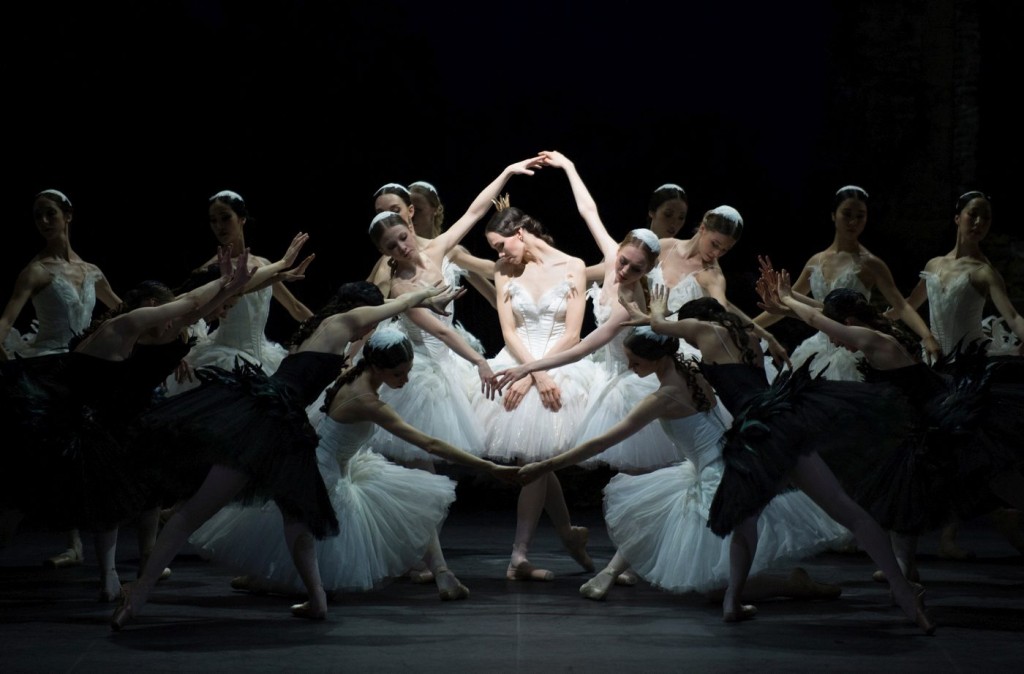 who whispered short instructions to her, one would have also fallen for her trick.
who whispered short instructions to her, one would have also fallen for her trick.
Yet from today’s perspective I still struggle to understand why Odette couldn’t be stopped from killing herself. She had forgiven Siegfried, she could be sure of his love, and Rothbart’s power was broken. Nevertheless she used the moment Siegfried was inattentive and ran jumping to her death.
Alexander Jones, who joined the Zurich company just this season after having been a principal at Stuttgart Ballet, was a thoroughly noble Prince. His every gesture was meaningful, credible and expressive; his partnering was skillful. Andrei 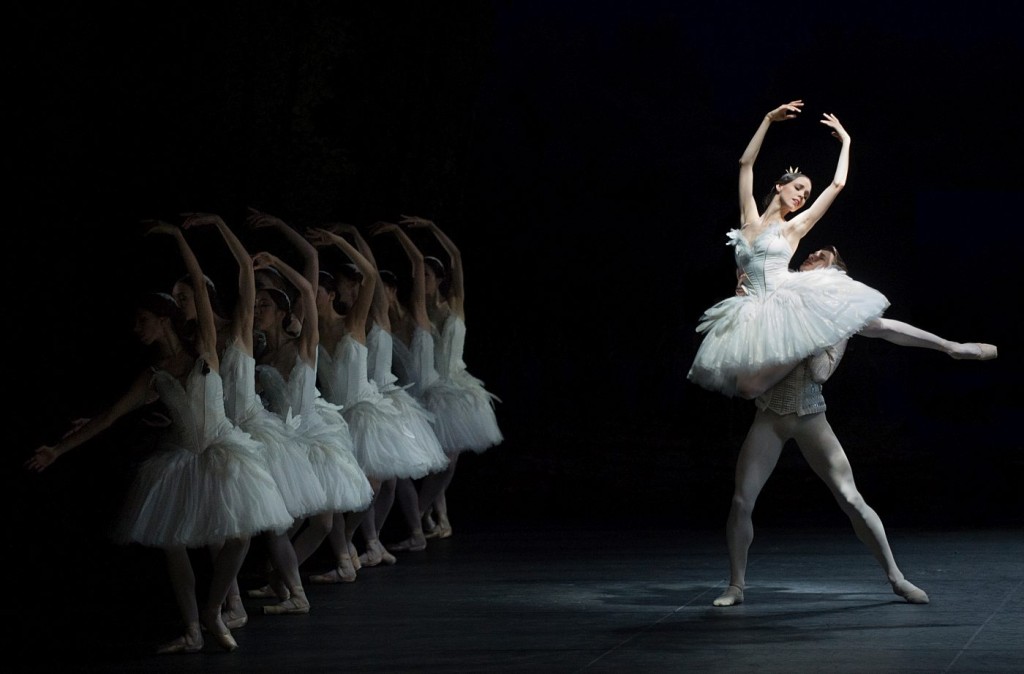 Cozlac in the role of his friend Benno was challenged by the slow jumps, which can easily look ponderous instead of grand. He portrayed a faithful and reliable companion.
Cozlac in the role of his friend Benno was challenged by the slow jumps, which can easily look ponderous instead of grand. He portrayed a faithful and reliable companion.
Manuel Renard’s Rothbart won the most sympathy when faltering and collapsing dead. He lay on the ground like a crow with twisted arm wings. Filipe Portugal was Wolfgang, Siegfried’s old gray haired tutor. I liked the red shoes he boldly wore under his gray-white patterned coat and also the funny, tottering way he attempted over-familiarity with one of the peasant girls. Nora Dürig as the Queen was not an unapproachable, cold-hearted monarch but a mother firmly pointing out to her son that she expected him to marry. The whole corps responded readily to the style required by Petipa. Throughout the whole 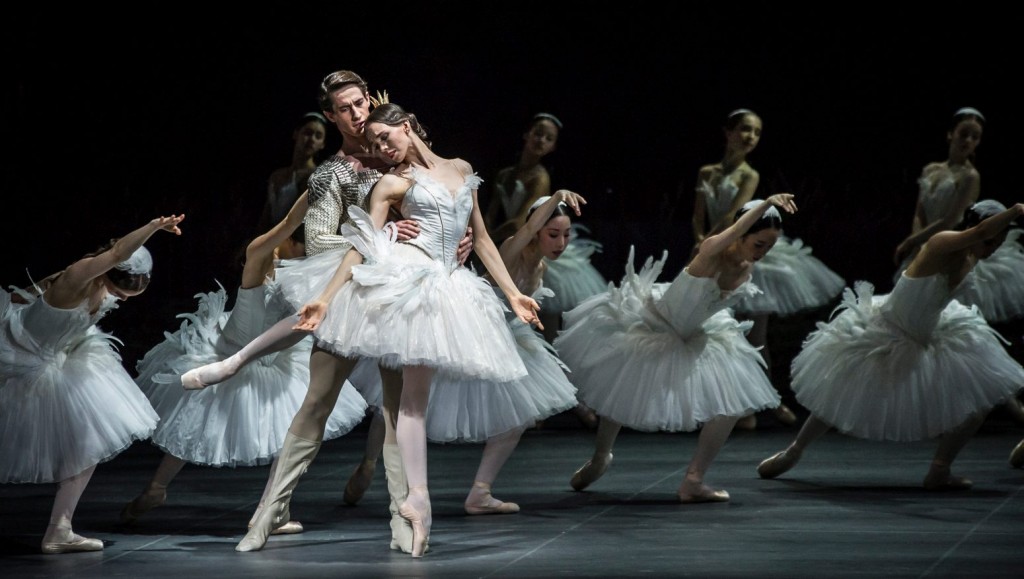 performance their joy at being part of this production was palpable.
performance their joy at being part of this production was palpable.
Rossen Milanov and the Philharmonic Orchestra Zurich contributed a vivid, sensitive rendition of Tchaikovsky’s beautiful score.
In an interview with the Zurich opera magazine Ratmansky stated that he was aware that such a reconstruction would cause a huge drama and uproar if undertaken in Russia. For the Zurich audience it was a much appreciated present.
| Links: | Homepage of Ballet Zurich | |
| Photos: | 1. | Viktorina Kapitonova (Odette) and ensemble, “Swan Lake” by Marius Petipa and Lev Ivanov with additional choreography by Alexei Ratmansky, Ballet Zurich © Carlos Quezada 2016 |
| 2. | Ensemble, “Swan Lake” by Marius Petipa and Lev Ivanov with additional choreography by Alexei Ratmansky, Ballet Zurich and Junior Ballet Zurich © Carlos Quezada 2016 | |
| 3. | Ensemble, “Swan Lake” by Marius Petipa and Lev Ivanov with additional choreography by Alexei Ratmansky, Ballet Zurich and Junior Ballet Zurich © Judith Schlosser 2016 | |
| 4. | Viktorina Kapitonova (Odette), Alexander Jones (Prince Siegfried) and ensemble, “Swan Lake” by Marius Petipa and Lev Ivanov with additional choreography by Alexei Ratmansky, Ballet Zurich and Junior Ballet Zurich © Carlos Quezada 2016 | |
| 5. | Viktorina Kapitonova (Odette) and ensemble, “Swan Lake” by Marius Petipa and Lev Ivanov with additional choreography by Alexei Ratmansky, Ballet Zurich © Carlos Quezada 2016 | |
| 6. | Manuel Renard (Rothbart) and Viktorina Kapitonova (Odette), “Swan Lake” by Marius Petipa and Lev Ivanov with additional choreography by Alexei Ratmansky, Ballet Zurich © Carlos Quezada 2016 | |
| 7. | Meiri Maeda, Wei Chen, Lou Spichtig, Christopher Parker, Giulia Tonelli, Surimu Fukushi, Marie Varlet and Shlomi Miara (Neapolitan Dance), “Swan Lake” by Marius Petipa and Lev Ivanov with additional choreography by Alexei Ratmansky, Ballet Zurich © Carlos Quezada 2016 | |
| 8. | Elizabeth Wisenberg, Dmitry Khamzin, Mélanie Borel, Matthew Knight, Madeleine Dowdney, Daniel Mulligan, Irmina Kopaczynska and Tigran Mkrtchyan (Mazurka), “Swan Lake” by Marius Petipa and Lev Ivanov with additional choreography by Alexei Ratmansky, Ballet Zurich © Carlos Quezada 2016 | |
| 9 | Yen Han and Cristian Alex Assis (Hungarian Dance), “Swan Lake” by Marius Petipa and Lev Ivanov with additional choreography by Alexei Ratmansky, Ballet Zurich © Carlos Quezada 2016 | |
| 10. | Viktorina Kapitonova (Odile), Manuel Renard (Rothbart), Nora Dürig (Queen) and ensemble, “Swan Lake” by Marius Petipa and Lev Ivanov with additional choreography by Alexei Ratmansky, Ballet Zurich and Junior Ballet Zurich © Carlos Quezada 2016 | |
| 11. | Viktorina Kapitonova (Odile) and Alexander Jones (Prince Siegfried), “Swan Lake” by Marius Petipa and Lev Ivanov with additional choreography by Alexei Ratmansky, Ballet Zurich © Carlos Quezada 2016 | |
| 12. | Alexander Jones (Prince Siegfried), “Swan Lake” by Marius Petipa and Lev Ivanov with additional choreography by Alexei Ratmansky, Ballet Zurich and Junior Ballet Zurich © Carlos Quezada 2016 | |
| 13. | Alexander Jones (Prince Siegfried), “Swan Lake” by Marius Petipa and Lev Ivanov with additional choreography by Alexei Ratmansky, Ballet Zurich © Carlos Quezada 2016 | |
| 14. | Viktorina Kapitonova (Odile), Manuel Renard (Rothbart) and ensemble, “Swan Lake” by Marius Petipa and Lev Ivanov with additional choreography by Alexei Ratmansky, Ballet Zurich and Junior Ballet Zurich © Carlos Quezada 2016 | |
| 15. | Viktorina Kapitonova (Odile), Alexander Jones (Prince Siegfried) and ensemble, “Swan Lake” by Marius Petipa and Lev Ivanov with additional choreography by Alexei Ratmansky, Ballet Zurich and Junior Ballet Zurich © Carlos Quezada 2016 | |
| 16. | Viktorina Kapitonova (Odile) and Alexander Jones (Prince Siegfried), “Swan Lake” by Marius Petipa and Lev Ivanov with additional choreography by Alexei Ratmansky, Ballet Zurich © Carlos Quezada 2016 | |
| 17. | Viktorina Kapitonova (Odette) and ensemble, “Swan Lake” by Marius Petipa and Lev Ivanov with additional choreography by Alexei Ratmansky, Ballet Zurich and Junior Ballet Zurich © Judith Schlosser 2016 | |
| 18. | Viktorina Kapitonova (Odette), Alexander Jones (Prince Siegfried) and ensemble, “Swan Lake” by Marius Petipa and Lev Ivanov with additional choreography by Alexei Ratmansky, Ballet Zurich and Junior Ballet Zurich © Judith Schlosser 2016 | |
| 19. | Viktorina Kapitonova (Odette), Alexander Jones (Prince Siegfried) and ensemble, “Swan Lake” by Marius Petipa and Lev Ivanov with additional choreography by Alexei Ratmansky, Ballet Zurich and Junior Ballet Zurich © Carlos Quezada 2016 | |
| 20. | Ensemble, “Swan Lake” by Marius Petipa and Lev Ivanov with additional choreography by Alexei Ratmansky, Ballet Zurich and Junior Ballet Zurich © Carlos Quezada 2016 | |
| Editing: | Laurence Smelser |
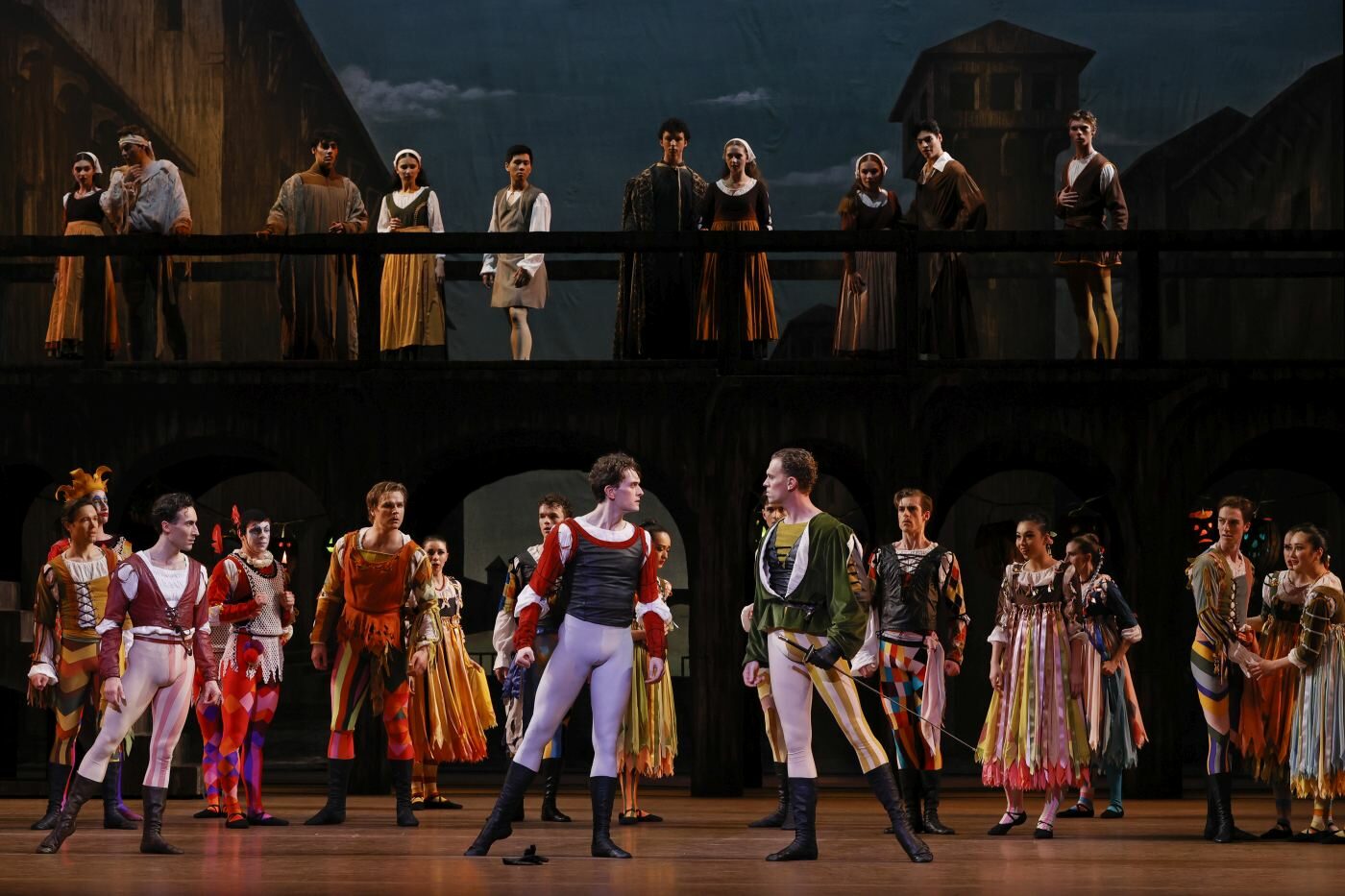
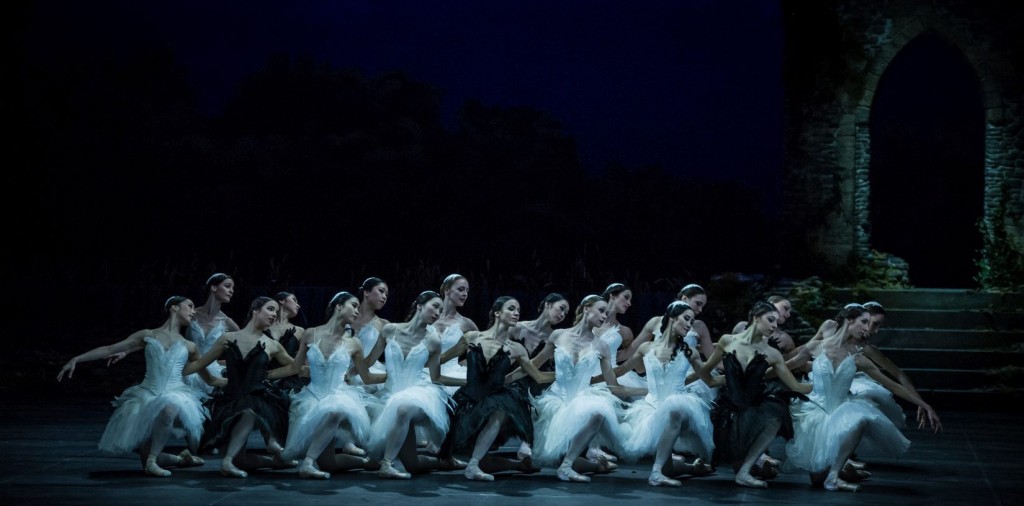



Since its premiere at New York City Ballet in 2010, the title of Ratmansky’s Lalo ballet, referred to as NAMOUNA above, in your much appreciated look at the SWAN LAKE, has been entitled: NAMOUNA, A GRAND DIVERTISSEMENT. I don’t know if the full title as used it Berlin, but it’s been consistently used this way in New York City.